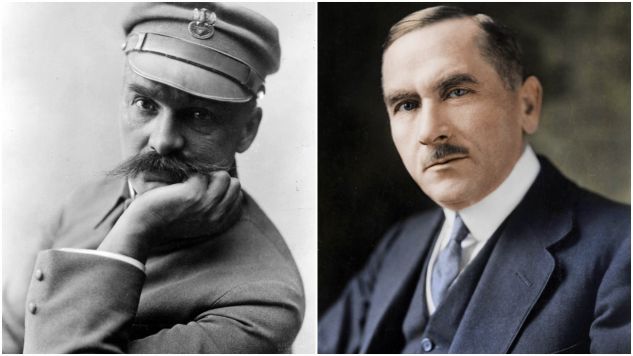Post by Bonobo on Nov 11, 2008 17:52:37 GMT 1
Shortly speaking, before I present you a deep article by some learned historian, what happened in 1918?
Poland, after 123 years of non-existence on the map of Europe, resurrected thanks to luck, historical events and Polish determination.
For 123 years three superpowers controlled Polish territory. It was called partitions. Russia, Austria and Germany tore Poland in 1795 and each got a share. To preserve their prey they had to cooperate and were successful in it for over a century. However, in 1914, the WW1 started and partition powers became enemies. Germany and Austria against Russia.
All of them lost the war, thus creating an incredible opportunity for Poles to regain their independence. And Poles didn`t miss the chance. The situation was different than during the lost Polish Risings of 19th century when only the nobility and intelligentsia took to arms, while enslaved peasants remained passive. In 1918 and later on Polish peasants knew they were not slaves but Polish citizens and they took an active part in defending newly born Poland against bolshevik invasion and German occupants.
What was the newly created state like?
en.wikipedia.org/wiki/Second_Polish_Republic
The Second Polish Republic or interwar Poland is the Republic of Poland between World War I and World War II.
When the borders of the state were fixed in 1922 after several wars, the republic had borders with Czechoslovakia, Germany, Free City of Danzig, Lithuania, Latvia, Romania, and the Soviet Union, plus a tiny strip of the coastline of the Baltic Sea, around the city of Gdynia. It had an area of 388 634 km² (sixth largest in Europe, in the fall of 1938, after the annexation of Zaolzie, the area grew to 389,720 km².), and 27.2 million inhabitants according to the census of that year. In 1939, just before the outbreak of World War II, it had an estimated 35.1 million inhabitants. Almost third of these were minorities (13.9% Ukrainians, 3.1%[1] Belarusians, 8.6% Jews, 2.3% Germans, and 3.4% percent Lithuanians, Russians and Czechs).
The Second Republic is often associated with times of great adversity, of troubles and of triumph. Having to deal with the economic difficulties and destruction of World War I, followed by the Soviet invasion during the Polish Soviet War, and then increasingly hostile neighbors such as Nazi Germany, the Republic managed not only to endure, but to expand.
The beginnings
Occupied by German and Austro-Hungarian armies in the summer of 1915, the formerly Russian-ruled part of what was considered Poland was proposed to become an German puppet state by the occupying powers on November 5, 1916, with a governing Council of State and (from October 15, 1917) a Regency Council (Rada Regencyjna Królestwa Polskiego) to administer the country under German auspices (see also Mitteleuropa) pending the election of a king.
Shortly before the end of World War I, on October 7, 1918, the Regency Council dissolved the Council of State and announced its intention to restore Polish independence. With the notable exception of the Marxist-oriented Social Democratic Party of the Kingdom of Poland and Lithuania (SDKPiL), most political parties supported this move. On October 23 the Council appointed a new government under Józef Swierzynski and began conscription into the Polish Army. On November 5, in Lublin, the first Soviet of Delegates was created. On November 6 the Communists announced the creation of a Republic of Tarnobrzeg. The same day, a Provisional People's Government of the Republic of Poland was created under the Socialist, Ignacy Daszynski.
On November 10, Józef Piłsudski, newly freed from imprisonment by the German authorities at Magdeburg, returned to Warsaw. Next day, due to his popularity and support from most political parties, the Regency Council appointed Piłsudski Commander in Chief of the Polish Armed Forces. On November 14 the Council dissolved itself and transferred all its authority to Piłsudski as Chief of State (Naczelnik Państwa).
Centers of government that were created in Galicia (formerly Austrian-ruled southern Poland) included a National Council of the Principality of Cieszyn (created in November 1918) and a Polish Liquidation Committee (created on October 28). Soon afterward, conflict broke out in Lwów between forces of the Military Committee of Ukrainians and the Polish irregular units of students and children, known as Lwów Eaglets, who were later supported by the Polish Army.
After consultation with Pilsudski, Daszynski's government dissolved itself and a new government was created under Jędrzej Moraczewski.
Marshall Piłsudski returns to Warsaw to create the government
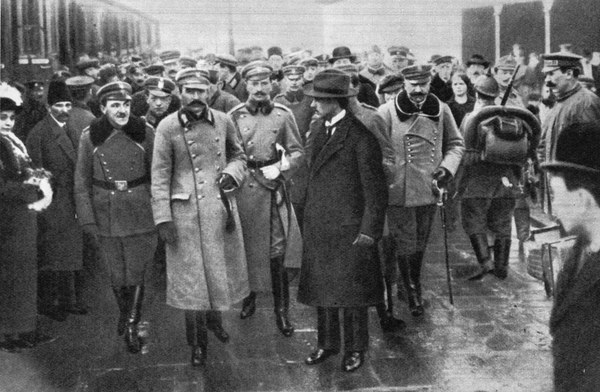
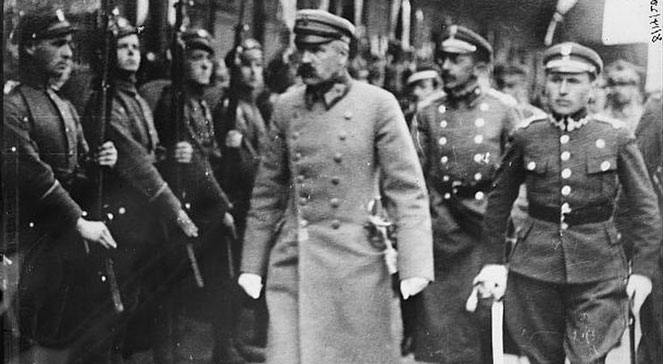
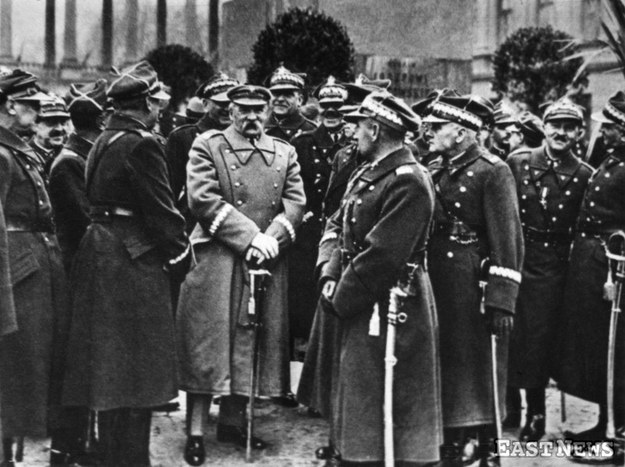

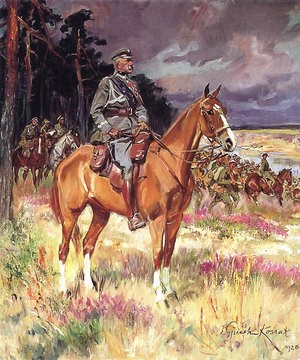


All over Poland Polish soldiers started disarming German and Austrian occupants. There was some fighting too.




Polish troops started field practice. Polish independence had to be defended actively...
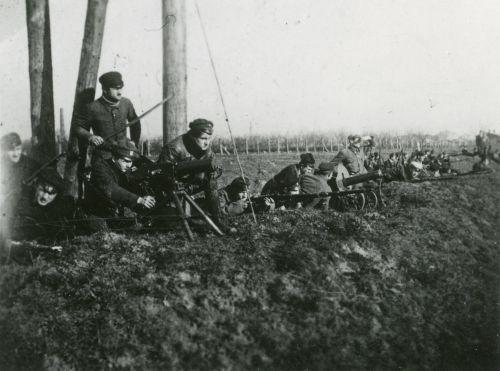
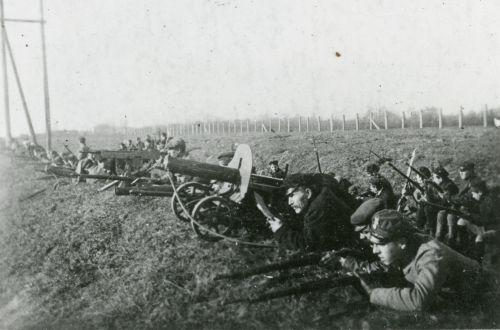
during the Bolshevik invasion.

In Poznan region, former German partition, Poles start a rising against Germans who still occupied Polish territory.
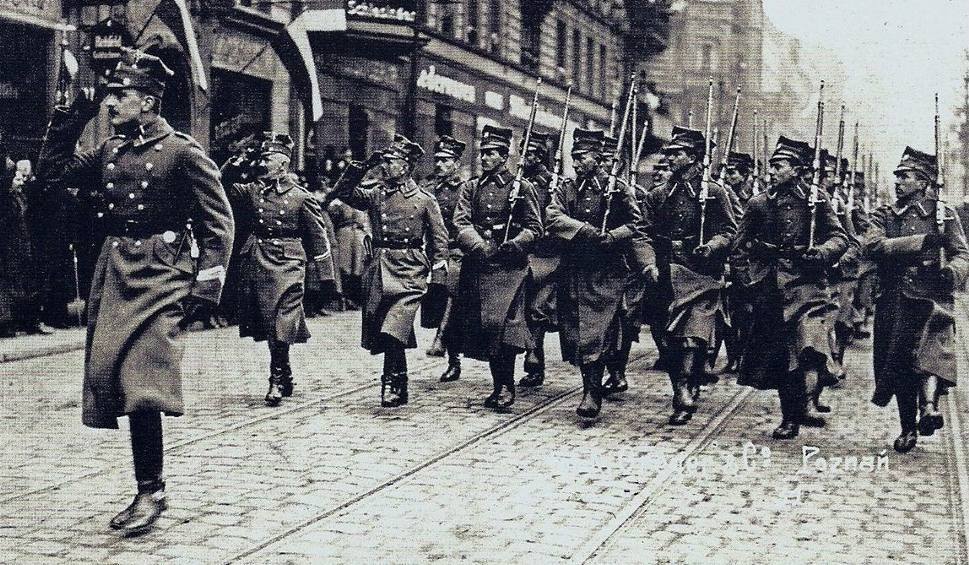
Poland, after 123 years of non-existence on the map of Europe, resurrected thanks to luck, historical events and Polish determination.
For 123 years three superpowers controlled Polish territory. It was called partitions. Russia, Austria and Germany tore Poland in 1795 and each got a share. To preserve their prey they had to cooperate and were successful in it for over a century. However, in 1914, the WW1 started and partition powers became enemies. Germany and Austria against Russia.
All of them lost the war, thus creating an incredible opportunity for Poles to regain their independence. And Poles didn`t miss the chance. The situation was different than during the lost Polish Risings of 19th century when only the nobility and intelligentsia took to arms, while enslaved peasants remained passive. In 1918 and later on Polish peasants knew they were not slaves but Polish citizens and they took an active part in defending newly born Poland against bolshevik invasion and German occupants.
What was the newly created state like?
en.wikipedia.org/wiki/Second_Polish_Republic
The Second Polish Republic or interwar Poland is the Republic of Poland between World War I and World War II.
When the borders of the state were fixed in 1922 after several wars, the republic had borders with Czechoslovakia, Germany, Free City of Danzig, Lithuania, Latvia, Romania, and the Soviet Union, plus a tiny strip of the coastline of the Baltic Sea, around the city of Gdynia. It had an area of 388 634 km² (sixth largest in Europe, in the fall of 1938, after the annexation of Zaolzie, the area grew to 389,720 km².), and 27.2 million inhabitants according to the census of that year. In 1939, just before the outbreak of World War II, it had an estimated 35.1 million inhabitants. Almost third of these were minorities (13.9% Ukrainians, 3.1%[1] Belarusians, 8.6% Jews, 2.3% Germans, and 3.4% percent Lithuanians, Russians and Czechs).
The Second Republic is often associated with times of great adversity, of troubles and of triumph. Having to deal with the economic difficulties and destruction of World War I, followed by the Soviet invasion during the Polish Soviet War, and then increasingly hostile neighbors such as Nazi Germany, the Republic managed not only to endure, but to expand.
The beginnings
Occupied by German and Austro-Hungarian armies in the summer of 1915, the formerly Russian-ruled part of what was considered Poland was proposed to become an German puppet state by the occupying powers on November 5, 1916, with a governing Council of State and (from October 15, 1917) a Regency Council (Rada Regencyjna Królestwa Polskiego) to administer the country under German auspices (see also Mitteleuropa) pending the election of a king.
Shortly before the end of World War I, on October 7, 1918, the Regency Council dissolved the Council of State and announced its intention to restore Polish independence. With the notable exception of the Marxist-oriented Social Democratic Party of the Kingdom of Poland and Lithuania (SDKPiL), most political parties supported this move. On October 23 the Council appointed a new government under Józef Swierzynski and began conscription into the Polish Army. On November 5, in Lublin, the first Soviet of Delegates was created. On November 6 the Communists announced the creation of a Republic of Tarnobrzeg. The same day, a Provisional People's Government of the Republic of Poland was created under the Socialist, Ignacy Daszynski.
On November 10, Józef Piłsudski, newly freed from imprisonment by the German authorities at Magdeburg, returned to Warsaw. Next day, due to his popularity and support from most political parties, the Regency Council appointed Piłsudski Commander in Chief of the Polish Armed Forces. On November 14 the Council dissolved itself and transferred all its authority to Piłsudski as Chief of State (Naczelnik Państwa).
Centers of government that were created in Galicia (formerly Austrian-ruled southern Poland) included a National Council of the Principality of Cieszyn (created in November 1918) and a Polish Liquidation Committee (created on October 28). Soon afterward, conflict broke out in Lwów between forces of the Military Committee of Ukrainians and the Polish irregular units of students and children, known as Lwów Eaglets, who were later supported by the Polish Army.
After consultation with Pilsudski, Daszynski's government dissolved itself and a new government was created under Jędrzej Moraczewski.
Marshall Piłsudski returns to Warsaw to create the government







All over Poland Polish soldiers started disarming German and Austrian occupants. There was some fighting too.




Polish troops started field practice. Polish independence had to be defended actively...


during the Bolshevik invasion.

In Poznan region, former German partition, Poles start a rising against Germans who still occupied Polish territory.











